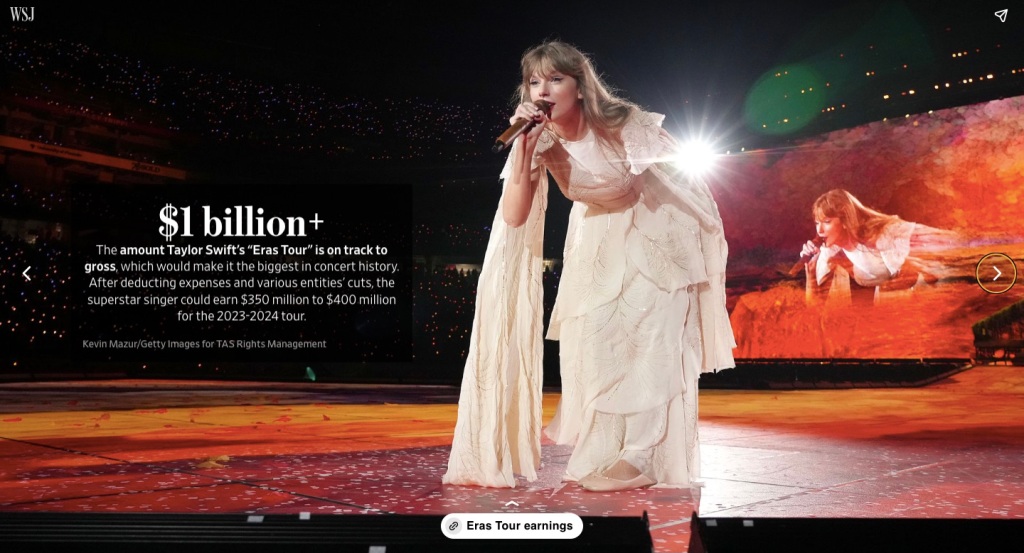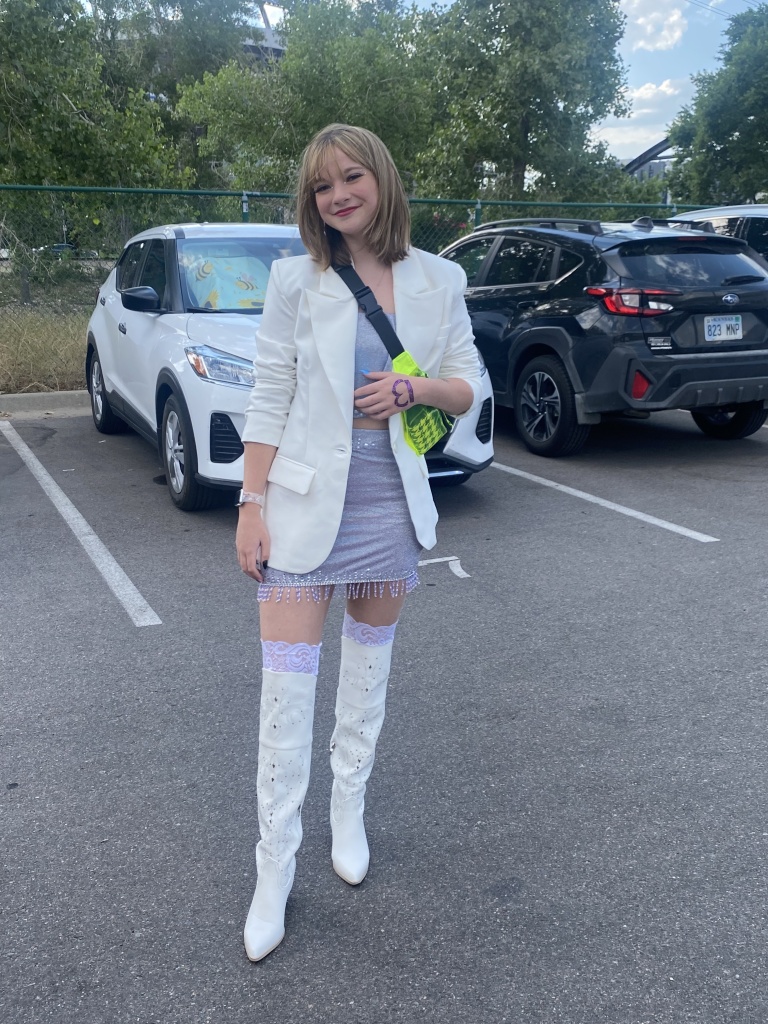Chapter One – The Quest
Apparently Taylor Swift is a thing. She was in Denver this weekend on her “Eras” tour. I don’t think I belong to any of her eras because I couldn’t name you even one of her songs. But there’s a lot of them. And a lot of people are paying attention – emphasis on “paying.” Check out this from the Wall Street Journal:

$1 Billion tour gross. $400 Million net. According to Worldometer, that places her as the 178th most productive “nation” in terms of GDP (as of 2017 anyway).
About 6 weeks ago our daughter Aubrey decided she was going to make it her life’s mission to attend one of Ms. Swift’s concerts. The concert has been sold out for months & even took down the Ticketmaster site multiple times when tickets first went on sale. Probably the hottest ticket on the planet right now. Undeterred, she launched what became basically a full-time job searching all the secondary markets for tickets.
To increase her odds of scoring a ticket, Aubrey decided she’d expand here search to include both Denver and Kansas City. We pulled family in from both cities to aid in the search – without a lot of luck. Check out this screen shot sent by one of my brothers for one of the shows in KC. I was really tempted to grab a couple of those “Great Deal” floor seats at $7,000 a pop.

Day after day the story was pretty much the same – both in KC and here in Denver. We actually pivoted and decided to get tickets to one of her European shows coming up in 2024. Those tickets are just now going on sale (Ticketmaster crashed again) starting at about €500. If we were going to spend the kind of jack to attend a US concert, we might as well get a trip to Paris, Helsinki or wherever out of it.
But the US search continued pretty much 24/7 while we were thinking about a trip to the Old Country (which would have been my preference). And then – presto! About a week before the concert she found one – one – Ticketmaster verified ticket on Craigslist (remember them) for $175. No catch. The ticket was good & she went to the concert. One very, very happy girl. Sat by herself, but not really. 65,000 of her closest friends were singing & dancing along. An awesome night.
Chapter Two – The Multiverse
So when Jerry gets a concert ticket, he normally think about things like parking, the weather, is the car gassed up, etc. You know, normal human logistical stuff. Somewhere along the line I might even checking to see if I have clean underwear. But this is where am reminded of an entirely new parallel dimension in thought. It’s proof of a multiverse. Turns out, the only thing remotely relevant to consider when acquiring a ticket to Ms. Swift’s concert is WHAT AM I GOING TO WEAR????? It’s at this point where you have wormholed to Ms. Swift’s universe. In addition to owning this planet, she seems to have an entire universe at her disposal.
My crack research staff tells me that Ms. Swift has recorded 10 studio albums, 4 live albums and any number of EP’s etc. (no 8-tracks that I could find). Each of these albums features Ms. Swift dressed in one outfit or another, and it is the expectation (actually it’s probably a law in Ms. Swift’s universe) that concert goers will festoon themselves after one of these outfits.
So with only 7 days to go until the concert, the 24/7, 6-week search for a ticket became pretty much became a comparative and distant hiccup. We now had to come up with an outfit in the style of Ms. Swift’s 7th studio album – “Lover.”
(I’ve since discovered that there are sites pretty much dedicated to selling recreations of Ms. Swifts outfits. I did not know that at the time, but I’m pretty sure that ordering an outfit would be pretty much the same price as another ticket).
Much to their credit, mom and daughter decided they would make an outfit. As in measure, sew, hem, line, etc. an entire outfit. So they wormholed into the multiverse while I simply tried to keep the dog fed, the meals prepared, the dishes done and the bills paid. They were present but not accounted for for about 7 days.
I know there were a lot of trips to stores I have never been to. There was a frantic search for an old glue gun at one point. Discernable progress was being made. But then, with only abut one day to go – and you have already guessed this – the old sewing machine went kaput. It wasn’t mostly dead. It completely expired.
You can pretty much fill in the banks from here. At the 11th hour, a new sewing machine became this universe’s top priority. We got a new sewing machine. For which I shall be requesting reimbursement from Ms. Swift’s universe.
I know some of you will be asking at this point “What KIND of sewing machine is it?” I do not know and I do not care. If there is harmony between our two universes (Ms. Swift’s and ours) I’d assume it is a Singer. All I know is that it did the job.
So Aubrey went to a Taylor Swift concert and all we got was a lousy sewing machine. And one very happy girl. And a proud momma & daughter that collaborated on the project. When it was all done, I may or may not have gotten a little misty. It was really cool.
But that still doesn’t mean that the next time U2 comes to town I’m gonna run out and buy a pair of Bono tinted shades.
One question? Who wore it better?






